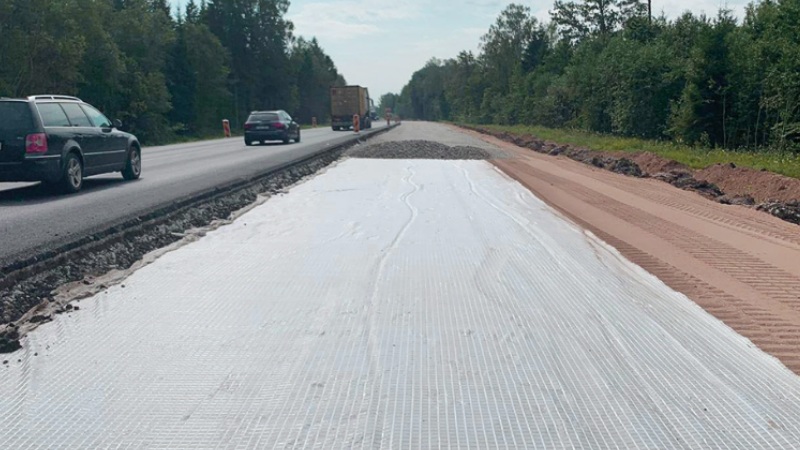Roadworks are fast-moving with unexpected ground conditions that emerge once the topsoil is stripped and soft spots are identified. With the pressure on to keep projects on track, a common question asked is ‘how can geogrids help keep my project on time?’
Roadworks are fast-moving with unexpected ground conditions that emerge once the topsoil is stripped and soft spots are identified. With the pressure on to keep projects on track, a common question asked is ‘how can geogrids help keep my project on time?’
A good rule of thumb is for low CBR subgrades, geogrids will reduce the subbase by 1/3 or increase ESA’s by 1/3.
The next question is ‘which geogrid do I need?’
Geogrid selection works in two ways:
1. Refined Calculation
The design engineer calculates a pavement design considering subgrade CBR, road base, ESA’s and the geogrid’s mechanical properties. Reputable geogrids will have a strong track record, with independent testing carried out in both the lab and full-scale field testing such as that done by the US Army Corp of Engineers.
The design engineer should have all the mechanical properties of the geogrid to input into standard commercial design software. Note that the use of proprietary manufacturers’ design software should only be used once design output legal liability is verified. This is because liability for the design needs to be clear should a pavement not perform.
Once the parameters have been entered, the design will then specify a subbase thickness and a tensile capacity. Typical generic grids have biaxial tensile capacities of 20, 30 or 40 kN/m.
2. Trial and Error
In some cases, a project begins and unexpected soft spots are encountered on site. Due to the time and cost involved to stop works and then engage geotechnical engineers and design engineers, it is not practical or cost-effective to design a complete from-scratch solution.
In these cases, the project manager on site can work with the geogrid technical team to trial a grid in order to overcome the issue quickly and cost-effectively.
Typically a grid will be laid in at subgrade level and 300mm of subbase laid over the top. At this point, the layer is proof-rolled and if deemed satisfactory, usually with a differential settlement of less than 20mm (or other field criteria), the next compaction lift is carried out.
If it is still soft with rutting occurring under wheel loads, then another geogrid is laid and a subsequent 300mm of subbase is laid.
There is an art to choosing the correct starting biaxial tensile capacity of the grid: something that an experienced geosynthetics supplier can assist with. Some criteria to take into account include the road’s importance, its lifespan, traffic volume, installation time, costs and subbase availability.
As an example, a 40kN geogrid is preferred on very soft CBRs to minimise the subbase depth and maximise construction speed. Multiple 20kN grids are preferred on higher subgrade CBRs or where subbase thickness will exceed 300mm. Geogrid will typically stabilise up to around 300mm of subbase.
In all cases, it’s wise to refer to your local State Road Authority guidelines, for example, QLD MRTS 58 for Road Subbase Reinforcement using Geogrids/Geocomposites.
Other geogrid selection criteria:
There is a range of other factors that go into choosing the right geogrid, including:
- Subbase particle distribution – generic biaxial grids will stabilise a well-graded subbase up to 70mm.
- Use of geotextile-laminated geogrids or a separate geogrid and separation geotextile
- Special consideration for pH ranges beyond the 4 to 9 limits
- Roll width to reduce the potential for wastage: geogrid widths vary but are typically 4m to 6m. Selecting geogrids with the appropriate width will help minimise wastage.
Advice on choosing geogrids for pavement applications
When chosen correctly, geogrids over offer substantial time and cost savings.
For more information on product selection, view the Polyfabrics range of geogrids or get in touch with the technical team at Polyfabrics.

